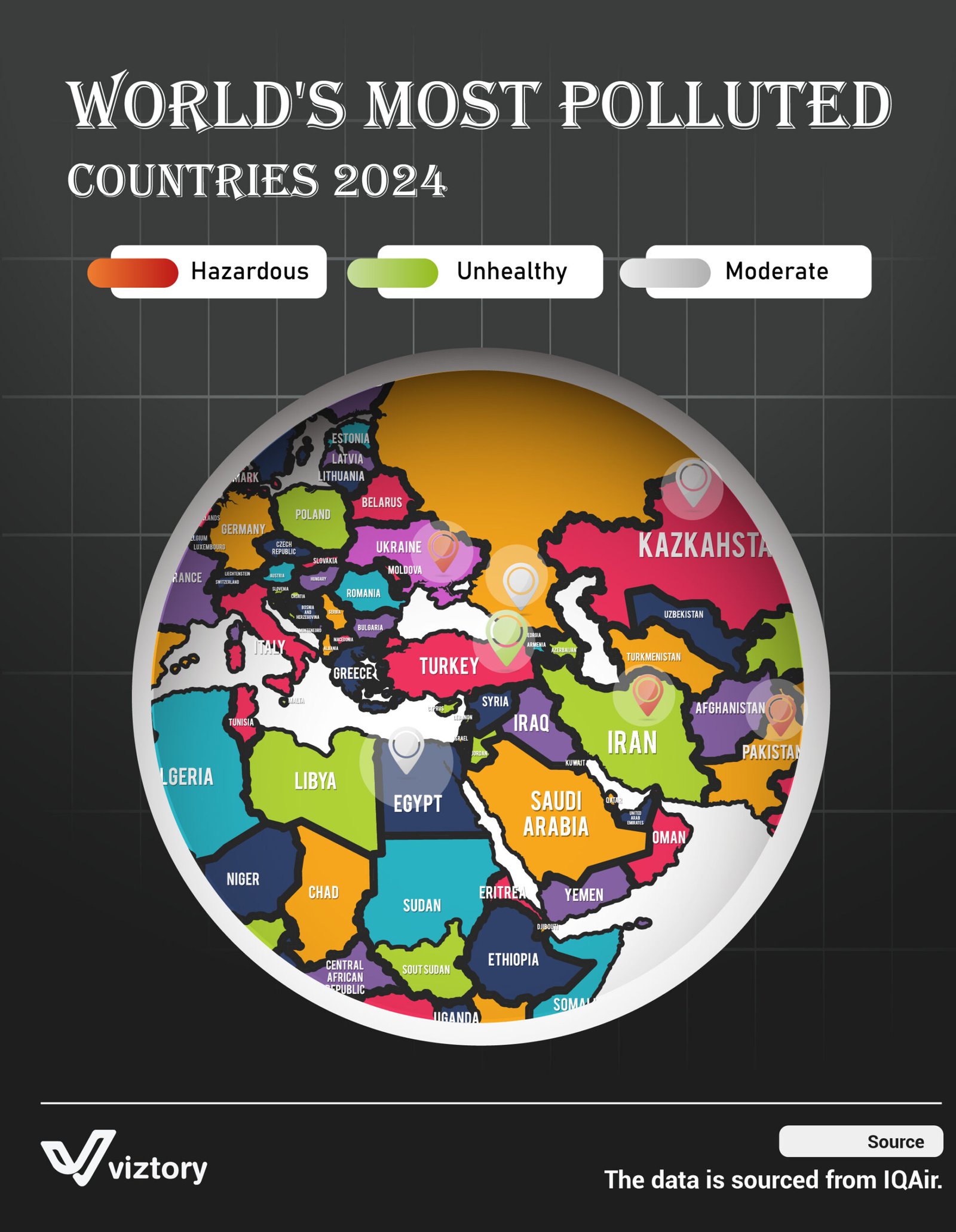World’s Most Polluted Countries 2024
-
Jan, Sun, 2025
Pollution remains one of the most pressing challenges threatening global public health and the environment. The map titled “World’s Most Polluted Countries 2024” highlights varying levels of pollution across countries, classified based on the color of the location marker above each country: red indicates very high pollution levels, green represents moderate pollution, and gray signifies relatively low pollution levels.
The Health Crisis of Pollution
Polluted air contains fine particles that directly impact respiratory and cardiovascular health. According to the map, countries marked in red, such as Iran, Pakistan, and Turkey, face very high levels of pollution. Prolonged exposure to such hazardous conditions can lead to chronic diseases, including asthma, heart disease, cancer, and even premature death.
Countries marked in green, like Egypt, experience moderate pollution levels, meaning air quality is not entirely healthy but less dangerous compared to red-marked countries. Meanwhile, countries in gray, such as Libya and Sudan, enjoy relatively better air quality but still require improvements to avoid long-term health risks.
Regional Insights from the Map
The map reveals regional variations in pollution levels. Countries like Iran and Turkey, marked in red, struggle with severe pollution due to industrial emissions, vehicle exhaust, and weak environmental regulations. Egypt, marked in green, faces moderate pollution levels that still pose health risks. On the other hand, Libya and Sudan, marked in gray, benefit from relatively lower pollution levels, partly due to limited industrial activity.
Health and Social Impacts
High pollution levels, especially in red-marked countries, result in severe health impacts, increasing healthcare costs and negatively affecting economic productivity. Even countries with moderate (green) or relatively low (gray) pollution are not entirely safe, as air pollution still influences quality of life and requires proactive measures.
Calls for Action
The map underscores the urgent need for local, regional, and international action. Solutions include increasing reliance on renewable energy, improving public transportation, and reducing industrial emissions. Countries with moderate and relatively low pollution levels must also take preventive measures to maintain air quality and avoid future degradation.
Conclusion
The “World’s Most Polluted Countries 2024” map provides clear insights into pollution levels and their impact on public health. Immediate action is crucial, particularly for red-marked countries. Meanwhile, green- and gray-marked countries must work on sustainable efforts to protect the environment and ensure clean air for future generations.

